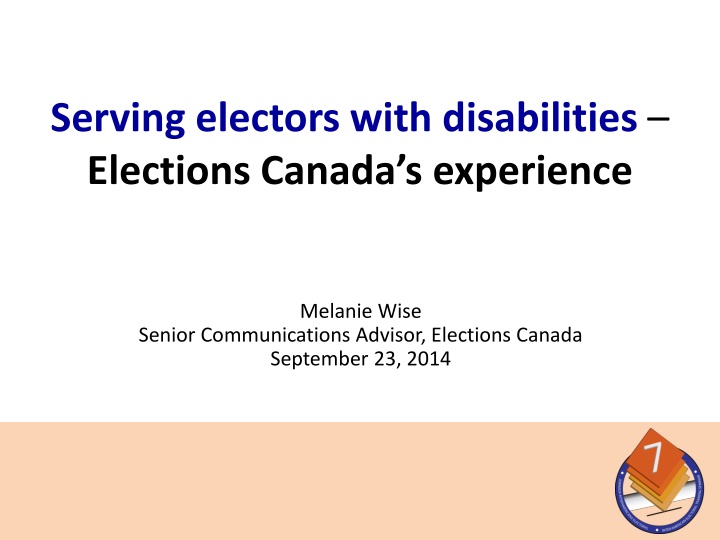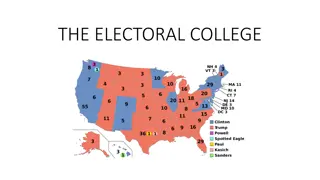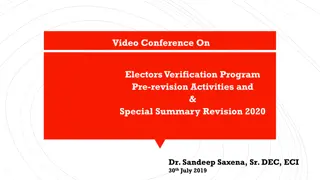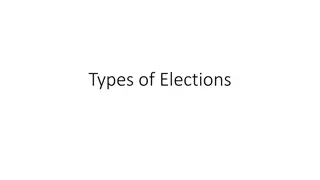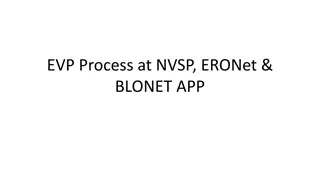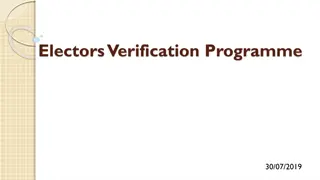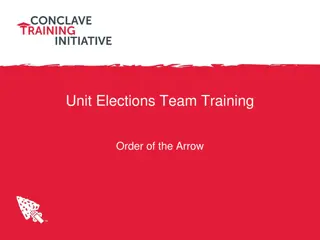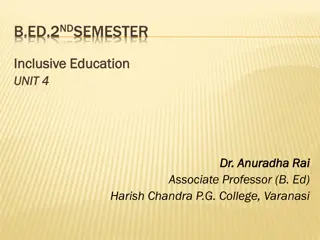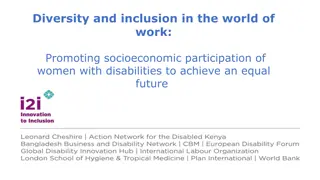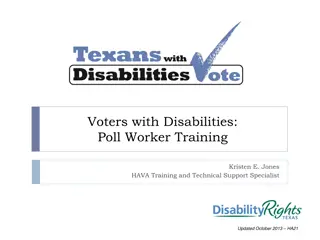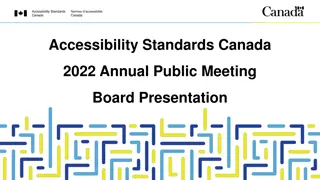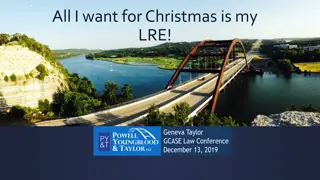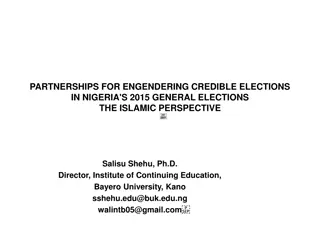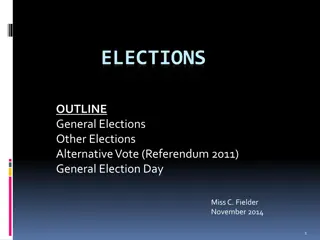Ensuring Inclusive Elections: Serving Electors with Disabilities in Canada
This article explores Elections Canada's experience in serving electors with disabilities, highlighting the challenges faced by people with disabilities in Canada, barriers to accessibility, legal frameworks, consultations with disability organizations, and initiatives for improving voting services. Recommendations include a universal approach in communications, enhancing the voting experience at polls, facilitating independence, and better training for election workers. Various voting services are available, and efforts have been made to enhance accessibility at polling sites. Information products in multiple formats aim to provide accessible information to all electors.
Download Presentation

Please find below an Image/Link to download the presentation.
The content on the website is provided AS IS for your information and personal use only. It may not be sold, licensed, or shared on other websites without obtaining consent from the author.If you encounter any issues during the download, it is possible that the publisher has removed the file from their server.
You are allowed to download the files provided on this website for personal or commercial use, subject to the condition that they are used lawfully. All files are the property of their respective owners.
The content on the website is provided AS IS for your information and personal use only. It may not be sold, licensed, or shared on other websites without obtaining consent from the author.
E N D
Presentation Transcript
Serving electors with disabilities Elections Canada s experience Melanie Wise Senior Communications Advisor, Elections Canada September 23, 2014
Election delivery 338 ridings 36-day calendar ~ 20,000 polling sites ~ 250,000 election workers 1
People with disabilities in Canada ~ 3.8 million; rate increases with age most common: pain, lack of flexibility, lack of mobility 2
Barriers Information and communications Architectural and physical Attitudinal Organizational Technological Socioeconomic 3
Legal framework Canada Elections Act Canadian Charter of Rights and Freedoms Canadian Human Rights Act UN Convention on the Rights of Persons with Disabilities 4
Consultations Consulted 19 disability organizations Created Advisory Group for Disability Issues Their recommendations: Use universal approach in communications: plain language, easy navigation Improve voting experience at the polls: magnifiers, better lighting and signage Facilitate more independence at the polls Better train election workers 5
Voting services Electors can vote: at advance polls by mail in person at any Elections Canada office at home, in the presence of an election officer and witness at acute-care hospitals, seniors homes and long-term care facilities 6
Voting services- at the polls Sites evaluated against 37 criteria (15 mandatory) If no automatic door opener, staff posted to open door Voting template that fits on top of a ballot Lists of candidates in Braille, large print Sign-language interpretation Help marking a ballot New voting screen Improved signage 7
Information products Revamped website, communications products o Several carry info on accessibility of polling place Many formats: o Braille o Large print o videos with open captioning in sign languages o TTY line o Websites - meet WCAG standards to level AA Broadcast info on accessible media channels, distribute via disability groups 8
Customer service New community relations officer for accessibility Improved cross-disability training for election workers More promotion of services and tools for people with disabilities Accessibility feedback process 9
